In brief
- Bitcoin’s price movements appear to suggest that the more expensive it becomes the more people desire it.
- An American economist first noticed this phenomenon among luxury items such as art.
- Since the market dip, buying pressure has receded suggesting that price decreases correlate with reduced demand.
The price of Bitcoin can rise and fall by thousands of dollars in as little as an hour. For smaller projects that can happen in a matter of seconds. But despite cryptocurrency’s notorious volatility, the desirability of digital money moves more slowly.
While there is a rich and diverse corner of crypto specializing in predicting price, there is a considerably smaller group of people looking at Bitcoin from a behavioral economics perspective. In particular, sentiment around Bitcoin when the price goes up.
When Bitcoin’s price surges, does the demand follow suit? And more importantly, when the price of Bitcoin goes down, does its allure fade with it? In this week’s article, we’ll be exploring whether Bitcoin has become what economists call a Veblen or a Giffen Good.
Veblen or Giffen good?
A Veblen good is typically a luxury item that enjoys the benefit of becoming more desirable as the price of that item increases. Think of a piece of priceless art or a luxury car brand: as their prices increase, so the demand also increases.
This phenomenon, first coined by American economist Thorstein Veblen in 1899, aimed to highlight how certain products and goods behaved very differently from others.
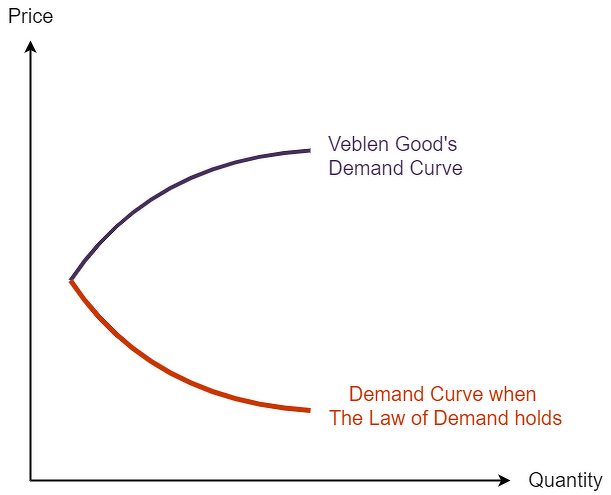
A Veblen good, according to its creator, has an upward-sloping demand curve, i.e. as price rises, so does demand. This runs counter to what happens to more common goods. Normal items, like food or every day items typically follow the opposite pattern: as price rises, demand falls.
However, a Veblen good is generally a high-quality, coveted product, and owning that product carries with it an elevated position among peers, that sucks people at lower income levels into copying the purchase, the so-called ‘snob effect’.
Ultimately, argued academic Richard Elliot in his essay on addictive consumption, “wealthy consumers can be lured by superficial factors such as rarity, celebrity representation and brand prestige.”
A Giffen good meanwhile, behaves in a similar way but is a good or product that is typically commonplace and widely available. The reason why Giffen goods see price spikes as demand rises is because those goods are usually essential items that are hard to replace, things like rice or coffee are good examples. So where does that leave Bitcoin? Is it a Veblen or a Giffen good?
Bitcoin, a tale of two goods
Bitcoin has managed to straddle both sides of the demand curve: it has been both a coveted and unwanted good.
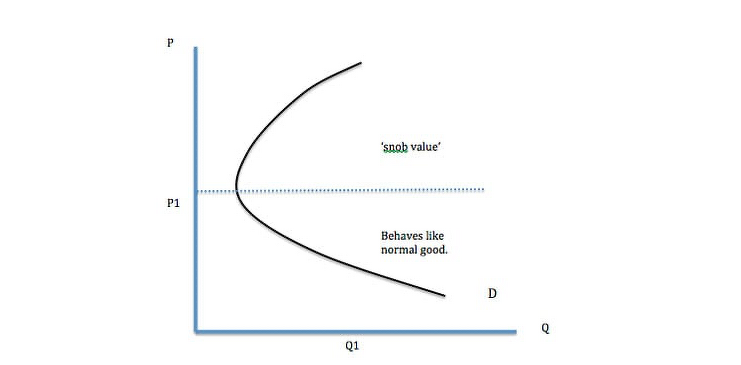
If we look into the history of Bitcoin, in the first seven years of its existence, trading volume – which we’ll use as an indicator of desirability – never broke above $100 million per day, despite its price going steadily up. The same trend happened after the Bitcoin crash of 2018. Even though the price of Bitcoin had reached $20,000, trading volumes continued to trickle down despite the sizable media attention Bitcoin had received – and the potential for its price to return to previous highs.
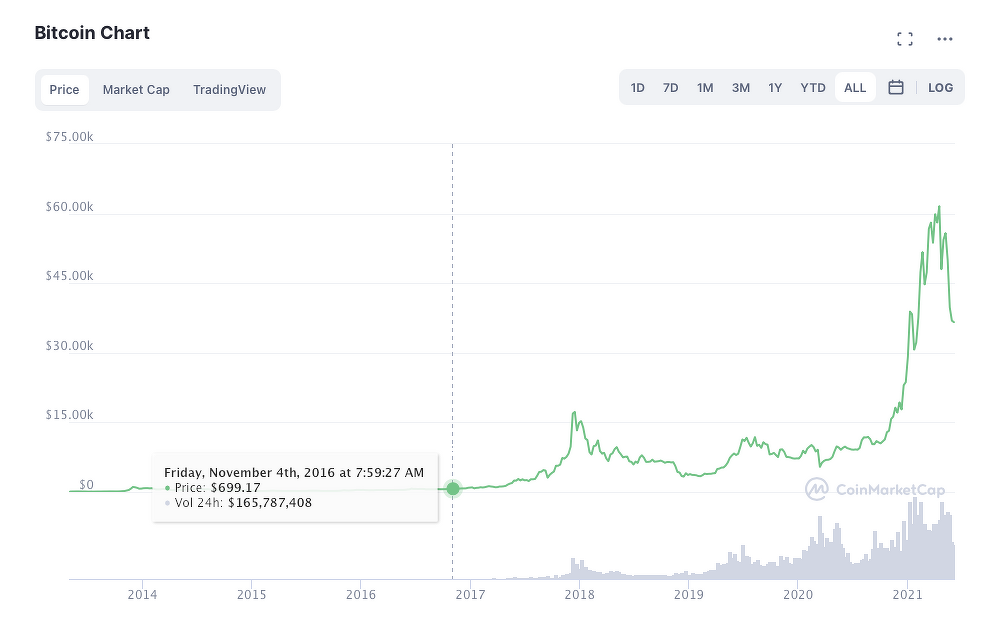
Fast forward to the most recent bull run, during late 2020, early 2021, and there’s a very different story. On March 18, 2020, the bottom of Bitcoin’s crash left the price of BTC around $5,000, trading volume was around $37 billion. As Bitcoin’s price went up, so did its volume.
In January of this year, 24-hour trading volume surpassed $100 billion and stayed in the high $80s for the next few weeks. When we cross-reference that with the Fear and Greed Index, we can see that inflows of money into Bitcoin showed extreme buying pressure.
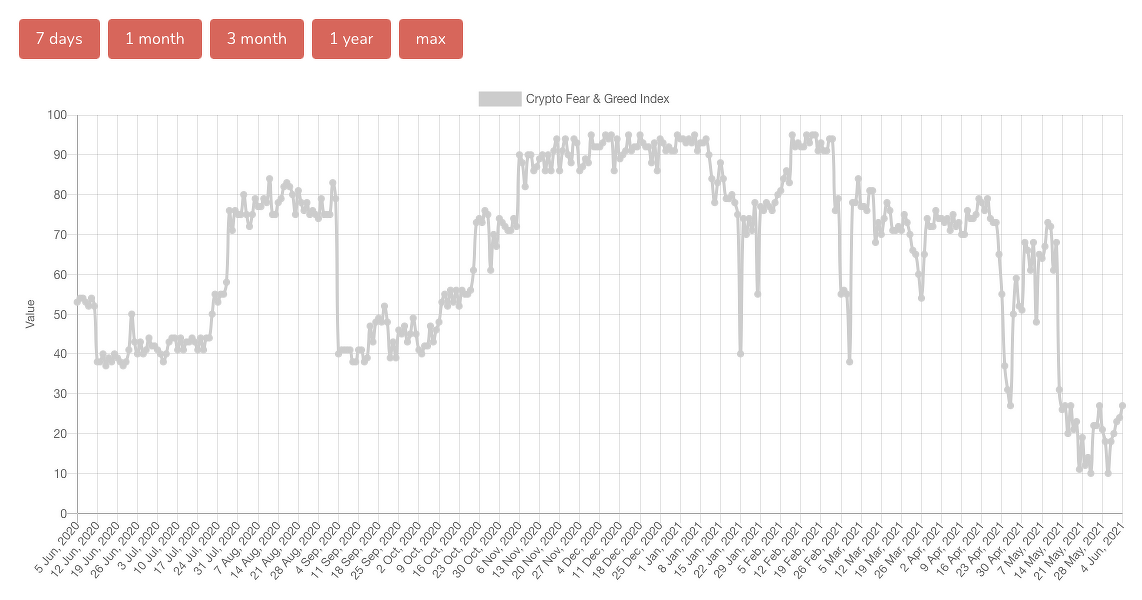
Behavioral economists believe that as the price of a Veblen good goes up, people assume a product is of better quality and therefore the higher price is justified. Additionally, Veblen goods are regarded as a status symbol sought out by affluent consumers who place a premium on the utility of the good.
If we look at how Bitcoin was discussed during that period, it was referred to as a “financial religion” by Mark Cuban, with several other high net worth individuals espousing the virtues of buying Bitcoin. It was also delivering better returns than any other asset class, giving that “better product” feel.
There was also an uptick in people looking to get into crypto. Roughly 63% of adults in the US became “crypto curious,” in the last bull run, according to a survey by Gemini.
We can also see social activity appears to correlate closely with the surge in pricing. Lunar Crush, a sentiment analysis tool, showed increases in discussions on Bitcoin during this period.
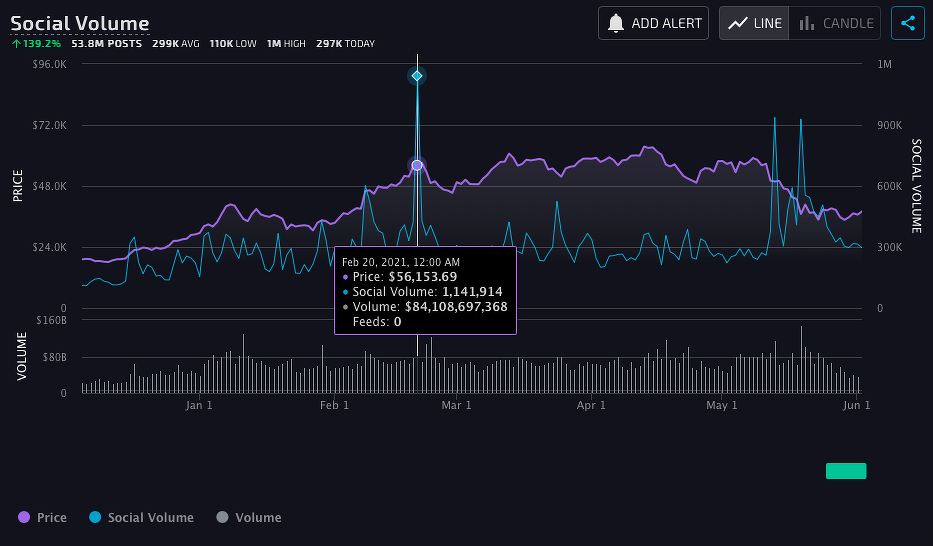
So where does that leave Bitcoin? Is it a Veblen or a Giffen good? It would be difficult to put Bitcoin down as a Giffen good, unless it’s directly compared to other cryptocurrencies. Bitcoin is by far the most widely available cryptocurrency to buy, and it could be argued is the only cryptocurrency the general public understands, so it’s not easy to swap it with something else.
However, the rising cost of Bitcoin, paired with the high exposure of wealthy people touting their exposure to Bitcoin would make it seem more like a luxury good that isn’t essential for everyday use. As Elliott argued earlier, “wealthy consumers can be lured by superficial factors such as rarity, celebrity representation and brand prestige.”
Since the market crash of May, has the sheen of Bitcoin dulled a bit? Looking at exchange volumes, the amount of cash trading hands has subsided, and market sentiment has moved firmly into the “fear” category.
But are people still talking about it? More so than ever according to Lunar Crush. With Altcoin season in full swing, is there a candidate in the broader crypto space that fits the Veblen bill? Ethereum’s recent popularity among the monied classes – thanks to its role as an NFT platform and a slew of upgrades later this year – gives it a distinctive Veblen air. Might Bitcoin finally have competition for which is the most desirable crypto of them all?
Sponsored post by Saidler & Co.
This sponsored article was created by Decrypt Studio. Learn More about partnering with Decrypt Studio.
Source: https://decrypt.co/72696/does-bitcoins-desirability-go-up-when-its-price-increases
- "
- &
- 000
- 2020
- 7
- All
- Altcoin
- American
- among
- analysis
- around
- Art
- article
- asset
- Bill
- Billion
- Bit
- Bitcoin
- BTC
- Bull Run
- buy
- Buying
- call
- car
- Cash
- Celebrity
- Coffee
- Common
- competition
- Consumers
- consumption
- Crash
- creator
- crypto
- cryptocurrencies
- cryptocurrency
- curve
- day
- delivering
- Demand
- DID
- digital
- Digital Money
- dollars
- Early
- Economics
- exchange
- Finally
- First
- follow
- food
- Forward
- full
- Gemini
- General
- Giving
- good
- goods
- Group
- High
- High Net Worth Individuals
- Highlight
- history
- How
- HTTPS
- image
- Income
- Increase
- index
- IT
- LINK
- March
- mark
- Market
- Media
- mentions
- million
- money
- net
- NFT
- Other
- Pattern
- People
- perspective
- platform
- Premium
- pressure
- price
- pricing
- Product
- Products
- projects
- public
- purchase
- quality
- returns
- Run
- sentiment
- So
- Social
- Space
- Sponsored
- Status
- surge
- talking
- Trading
- us
- utility
- Volatility
- volume
- WHO
- Wikipedia
- worth
- year
- years












